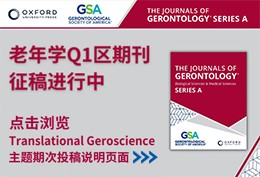-
Retraction AlChE J. (IF 4.0) Pub Date : 2017-09-01 Marcel Herhut, Christoph Brandenbusch, Gabriele Sadowski
Modeling and Prediction of Protein Solubility Using the Second Osmotic Virial Coefficient by Marcel Herhut, Christoph Brandenbusch, Gabriele Sadowski,
-
Dissipative particle dynamic simulation on the assembly and release of siRNA/polymer/gold nanoparticles based polyplex AlChE J. (IF 4.0) Pub Date : 2017-09-27 Xiaona Xie, Shouping Xu, Pihui Pi, Jiang Cheng, Xiufang Wen, Xuan Liu, Shengnian Wang
Dissipative particle dynamics simulation is used to reveal the loading/release of small interfering RNA (siRNA) in pH-sensitive polymers/gold nanoparticles (AuNPs) polyplex. The conformation dynamics of these polyplex at various Au/siRNA mass ratios, the original AuNPs sizes, polymer types, and pH values are simulated and compared to experimental results. At neutral conditions (pH = 7.4), spherical
-
Coproduction of acetic acid and hydrogen/power from natural gas with zero carbon dioxide emissions AlChE J. (IF 4.0) Pub Date : 2017-09-26 Ibubeleye Somiari, Vasilios Manousiouthakis
A process plant flow sheet that coproduces acetic acid and hydrogen/power from natural gas with zero carbon dioxide emissions is developed. Two cases are explored: the production of acetic acid and hydrogen (Case 1) and the production of acetic acid and power (Case 2). This is realized by the selection of an appropriate reaction cluster whose sum results in the overall reaction that coproduces acetic
-
Target bounds on reaction selectivity via Feinberg's CFSTR equivalence principle AlChE J. (IF 4.0) Pub Date : 2017-09-28 Jeffrey A. Frumkin, Michael F. Doherty
In this work, we show that the continuous flow stirred tank reactor (CFSTR) equivalence principle, developed by Feinberg and Ellison, can be used to obtain practical upper bounds on reaction selectivity for any chemistry of interest. The CFSTR equivalence principle allows one to explore the attainable reaction region by decomposing any arbitrary, steady-state reactor-mixer-separator system with total
-
Confinement of a polymer chain: An entropic study by Monte Carlo method AlChE J. (IF 4.0) Pub Date : 2017-09-08 Flavia Ruggiero, Rosaria Aruta, Paolo Antonio Netti, Enza Torino
The properties of macromolecules in presence of an interface could be considerably modified due to confinement effects. When phase separations are performed in nanoconfined domains, the concurrent presence of high-energy interfaces and conformational entropy constraints of the macromolecules causes profound differences in polymer aggregation behavior. Here, thermodynamics of a polymer chain in solution
-
Gravitational discharge of fine dry powders with asperities from a conical hopper AlChE J. (IF 4.0) Pub Date : 2017-09-12 Hui Lu, Jia Zhong, Gui-Ping Cao, Hai-Feng Liu
The effects of particle properties, especially the surface roughness and particle type, on the gravity discharge rate and flow behavior of fine dry powders from a conical hopper are studied in detail. The van der Waals force is considered to dominate the discharge of small particles, while the empty annulus effect dominates the discharge of large particles. To predict the van der Waals force between
-
The effect of liquid bridge model details on the dynamics of wet fluidized beds AlChE J. (IF 4.0) Pub Date : 2017-09-13 Mingqiu Wu, Johannes G. Khinast, Stefan Radl
Wet fluidized beds of particles in small periodic domains are simulated using the CFD-DEM approach. A liquid bridge is formed upon particle-particle collisions, which then ruptures when the particle separation exceeds a critical distance. The simulations take into account both surface tension and viscous forces due to the liquid bridge. We perform a series of simulations based on different liquid bridge
-
Quantitative and qualitative studies of microorganisms involved in full-scale autotrophic nitrogen removal performance AlChE J. (IF 4.0) Pub Date : 2017-08-25 Barbara Muñoz-Palazon, Alejandro Rodriguez-Sanchez, Antonio Castellano-Hinojosa, Jesus Gonzalez-Lopez, Mark C. M. van Loosdrecth, Riku Vahala, Alejandro Gonzalez-Martinez
Autotrophic nitrogen removal systems have been implemented at full-scale and provide an efficient way for nitrogen removal from industrial and urban wastewaters. Our study present qualitative and quantitative analysis of archaeal and bacterial amoA genes and Candidatus Brocadiales bacteria analyzed in six full-scale autotrophic nitrogen removal bioreactors. The results showed that ammonium oxidizing
-
Dynamic modeling and simulations of the behavior of a fixed-bed reactor-exchanger used for CO2 methanation AlChE J. (IF 4.0) Pub Date : 2017-09-05 Rasmey Try, Alain Bengaouer, Pierre Baurens, Christian Jallut
A multidimensional heterogeneous and dynamic model of a fixed-bed heat exchanger reactor used for CO2 methanation has been developed in this work that is based on mass, energy and momentum balances in the gas phase and mass and energy balances for the catalyst phase. The dynamic behavior of this reactor is simulated for transient variations in inlet gas temperature, cooling temperature, gas inlet flow
-
Nonlinear robust optimization for process design AlChE J. (IF 4.0) Pub Date : 2017-09-12 Yuan Yuan, Zukui Li, Biao Huang
A novel robust optimization framework is proposed to address general nonlinear problems in process design. Local linearization is taken with respect to the uncertain parameters around multiple realizations of the uncertainty, and an iterative algorithm is implemented to solve the problem. Furthermore, the proposed methodology can handle different categories of problems according to the complexity of
-
Modular methanol manufacturing from shale gas: Techno-economic and environmental analyses of conventional large-scale production versus small-scale distributed, modular processing AlChE J. (IF 4.0) Pub Date : 2017-09-17 Minbo Yang, Fengqi You
This article presents comparative techno-economic and environmental analyses of four representative shale gas monetization options, namely, conventional shale gas processing, large-scale methanol manufacturing, modular methanol manufacturing with shale gas supplied by pipelines, and modular methanol manufacturing with consideration of plant relocation. We first present shale gas supply models for the
-
A flowsheet model for the development of a continuous process for pharmaceutical tablets: An industrial perspective AlChE J. (IF 4.0) Pub Date : 2017-09-25 Salvador García-Muñoz, Adam Butterbaugh, Ian Leavesley, Leo Francis Manley, David Slade, Sean Bermingham
A dynamic model of a continuous direct compression process for pharmaceutical tablets is presented. The objective is to assess the impact of the variability from the feeder system on the concentration of drug in the powder in the feed frame of a tablet press. The model is based on principles of dispersed flow from the reaction engineering field. An estimability analysis was performed to understand
-
Plasma assisted nitrogen oxide production from air: Using pulsed powered gliding arc reactor for a containerized plant AlChE J. (IF 4.0) Pub Date : 2017-08-31 Bhaskar S. Patil, F. J. J. Peeters, Gerard J. van Rooij, J. A. Medrano, Fausto Gallucci, J. Lang, Qi Wang, Volker Hessel
The production of NOx from air and air + O2 is investigated in a pulsed powered milli-scale gliding arc (GA) reactor, aiming at a containerized process for fertilizer production. Influence of feed mixture, flow rate, temperature, and Ar and O2 content are investigated at varying specific energy input. The findings are correlated with high-speed imaging of the GA dynamics. An O2 content of 40–48% was
-
Fenton-like degradation of rhodamine B over highly durable Cu-embedded alumina: Kinetics and mechanism AlChE J. (IF 4.0) Pub Date : 2017-08-31 Yiyi Sheng, Yang Sun, Jing Xu, Jie Zhang, Yi-Fan Han
Cu-embedded mesoporous alumina, as a Fenton-like catalyst prepared via a sol-gel method, showed excellent activity and durability for the degradation of refectory compounds. The origin of active sites for the generation of hydroxyl radicals (•OH) were thoroughly studied using multitechniques. Cu, as the only active element, could be penetrated into the bulk of alumina and some Cu atoms were embedded
-
La-hexaaluminate for synthesis gas generation by Chemical Looping Partial Oxidation of Methane Using CO2 as Sole Oxidant AlChE J. (IF 4.0) Pub Date : 2017-09-01 Yanyan Zhu, Weiwei Liu, Xueyan Sun, Xiaoxun Ma, Yu Kang, Xiaodong Wang, Junhu Wang
Chemical looping partial oxidation of methane using a sole CO2 oxidant (CL-POM-CO2) is an emerging technology for synthesis gas generation and CO2 utilization, which is highly dependent on an oxygen carrier (OC). In this work, Fe-substituted La-hexaaluminate as the OC was found to exhibit good reactivity and stability during 50 periodic CH4/CO2 redox cycles due to the formation of magnetoplumbite La-hexaaluminate
-
Automated measurements of gas-liquid mass transfer in micropacked bed reactors AlChE J. (IF 4.0) Pub Date : 2017-09-05 Jisong Zhang, Andrew R. Teixeira, Klavs F. Jensen
Gas-liquid mass transfer in micropacked bed reactors is characterized with an automated platform integrated with in-line Fourier transform infrared spectroscopy. This setup enables screening of a multidimensional parameter space underlying absorption with chemical reaction. Volumetric gas-liquid mass-transfer coefficients (kLa) are determined for the model reaction of CO2 absorption in a methyl diethanolamine/water
-
Organocatalyzed Beckmann rearrangement of cyclohexanone oxime in a microreactor: Kinetic model and product inhibition AlChE J. (IF 4.0) Pub Date : 2017-09-12 Chencan Du, Jisong Zhang, Guangsheng Luo
The kinetic study of Beckmann rearrangement of cyclohexanone oxime catalyzed by trifluoroacetic acid and acetonitrile in a microreactor is presented in this article. Parametric studies are conducted varying temperature, ratio of trifluoroacetic acid to acetonitrile, and concentration of cyclohexanone oxime. The inhibition effect of ɛ-caprolactam in this reaction system is firstly reported. A comprehensive
-
Multiscale modeling of methane catalytic partial oxidation: From the mesopore to the full-scale reactor operation AlChE J. (IF 4.0) Pub Date : 2017-09-21 Jorge E. P. Navalho, José M. C. Pereira, José C. F. Pereira
A multiscale methodology combining three different reactor length-scales is presented to investigate the role of the catalyst internal pore structure and metal loading and dispersion on the catalyst layer and full-scale reactor performances. At the catalyst level, the methodology involves pore-scale simulations in the three-dimensional mesopore and macropore space. The information gathered at the catalyst
-
Gas drying with ionic liquids AlChE J. (IF 4.0) Pub Date : 2017-08-29 Jingli Han, Chengna Dai, Zhigang Lei, Biaohua Chen
The gas drying technology with ionic liquids (ILs) was systematically studied ranging from the molecular level to industrial scale. The COSMO-RS model was first used to screen the suitable IL and provide theoretical insights at the molecular level. Toward CO2 gas dehydration, we measured the CO2 solubility in single [EMIM][Tf2N] and in the [EMIM][Tf2N] + H2O mixture, as well as the vapor-liquid equilibrium
-
Economic assessment of carbon capture by minichannel absorbers AlChE J. (IF 4.0) Pub Date : 2017-08-31 Ziqiang Yang, Tariq S. Khan, Mohamed Alshehhi, Yasser F. AlWahedi
In this work, a physio-economic model supported by lab-scale experiments assessing the economic viability of minichannel based carbon capture units is presented. The net present value of (capital and operating) costs (NPVC) ensued throughout the plant life is selected as the benchmarking parameter. An optimization problem is formulated and solved with the objective of minimizing the NPVC of the unit
-
Chemical solvent in chemical solvent: A class of hybrid materials for effective capture of CO2 AlChE J. (IF 4.0) Pub Date : 2017-09-12 Feng-Feng Chen, Kuan Huang, Jie-Ping Fan, Duan-Jian Tao
Amino acid ionic liquids (AAILs) are chemical solvents with high reactivity to CO2. However, they suffer from drastic increase in viscosity on the reaction with CO2, which significantly limits their application in the industrial capture of CO2. In this work, 1-ethyl-3-methylimidazolium acetate ([emim][Ac]) which also exhibits chemical affinity to CO2 but low viscosity, and its viscosity does not increase
-
Adsorption separation of R134a, R125, and R143a fluorocarbon mixtures using 13X and surface modified 5A zeolites AlChE J. (IF 4.0) Pub Date : 2017-09-14 Darshika K. J. A. Wanigarathna, Bin Liu, Jiajian Gao
We report a facile method for the adsorption separation of fluorocarbon blends containing tetrafluoroethane (R134a), pentafluoroethane (R125) and trifluoroethane (R143a) refrigerants into their pure components using commercial 13X zeolite and pore-size modified 5A zeolite under ambient condition. Based on the measured R134a, R125, and R143a pure gas equilibrium adsorption isotherms, the adsorption
-
A systematic method to synthesize all dividing wall columns for n-component separation—Part I AlChE J. (IF 4.0) Pub Date : 2017-09-26 Gautham Madenoor Ramapriya, Mohit Tawarmalani, Rakesh Agrawal
We present an easy-to-use step-wise procedure to synthesize an initial-dividing wall column (i-DWC) from any given n-component basic distillation column sequence or its thermally coupled derivative. The procedure to be used is dependent on the nature of the distillation column sequence that is to be converted into a DWC, and comprises of an intuitive set of steps that we demonstrate through examples
-
A systematic method to synthesize all dividing wall columns for n-component separation: Part II AlChE J. (IF 4.0) Pub Date : 2017-09-26 Gautham Madenoor Ramapriya, Mohit Tawarmalani, Rakesh Agrawal
We present a simple rule that, for the first time, enables exhaustive enumeration of dividing wall columns (DWCs) corresponding to any given thermally coupled distillation column-configuration. With the successive application of our rule, every partition in a DWC can be extended all the way to the top and/or to the bottom of a column without losing thermodynamic equivalence to the original thermally
-
Ultrasound–assisted synthesis and characterization of polymethyl methacrylate/reduced graphene oxide nanocomposites AlChE J. (IF 4.0) Pub Date : 2017-08-30 Maneesh Kumar Poddar, Sushobhan Pradhan, Vijayanand S. Moholkar, Mohammad Arjmand, Uttandaraman Sundararaj
This article reports ultrasound–assisted synthesis of polymethyl methacrylate (PMMA)/reduced graphene oxide (RGO) nanocomposites by in situ emulsion polymerization coupled with in situ reduction of graphene oxide. The thermal degradation kinetics of the nanocomposites was also assessed with Criado and Coats-Redfern methods. Intense microconvection generated by ultrasound and cavitation results in uniform
-
Novel semi-interpenetrating network structural phase change composites with high phase change enthalpy AlChE J. (IF 4.0) Pub Date : 2017-09-12 Yuang Zhang, Jinghai Xiu, Bingtao Tang, Rongwen Lu, Shufen Zhang
High phase change enthalpy, controllable temperature, and stable shape can expand the application of phase change materials (PCMs) in energy storage. In this study, a series of novel form-stable PCMs with high phase change enthalpy (169–195 J/g) and controllable temperature (45.3–61.4°C) were prepared. The PCMs exhibited a semi-interpenetrating polymer network (semi-IPN) structure resulting from the
-
Model for the outer cavity of a dual-cavity die with parameters determined by two-dimensional finite-element analysis AlChE J. (IF 4.0) Pub Date : 2017-08-25 Kenneth J. Ruschak, Steven J. Weinstein
A coating die forms liquid layers of uniform thickness for application to a substrate. In a dual-cavity coating die an outer cavity and slot improves flow distribution from an inner cavity and slot. A model for axial flow in the outer cavity must consider the ever-present cross flow. A 1-D equation for the pressure gradient for a power-law liquid is obtained as a small departure from a uniform flow
-
Chaotic mixing in a barrier-embedded partitioned pipe mixer AlChE J. (IF 4.0) Pub Date : 2017-08-25 Seon Yeop Jung, Kyung Hyun Ahn, Tae Gon Kang, Gi Taek Park, Sang Ug Kim
Inspired by the partitioned pipe mixer (PPM), a barrier-embedded partitioned pipe mixer (BPPM) is designed and analyzed using a numerical simulation scheme. The BPPM is a static mixer, composed of orthogonally connected rectangular plates with a pair of barriers, which divide, stretch, and fold fluid elements, leading to chaotic mixing via the baker's transformation. The aspect ratio of the plate (α)
-
Dynamic formation and scaling law of hollow droplet with gas/oil/water system in dual-coaxial microfluidic devices AlChE J. (IF 4.0) Pub Date : 2017-08-25 Fu-Ning Sang, Zhuo Chen, Yun-Dong Wang, Jian-Hong Xu
Based on the one-step microfluidic method of producing hollow droplet with thin film, this article studies the effect of water and oil flow rate, gas pressure, and viscosity of aqueous phase on the dynamic formation and size of hollow droplet by analyzing large amounts of data acquired automatically. The results show that the filling stage of hollow droplet is similar to that of microbubble formation
-
Experiments on breakup of bubbles in a turbulent flow AlChE J. (IF 4.0) Pub Date : 2017-08-31 Jiří Vejražka, Mária Zedníková, Petr Stanovský
The breakup of air bubbles in a turbulent water flow is studied experimentally. Water flows from a nozzle array, generating intense turbulence, and then flows downward through a cell. The velocity field is measured by PIV, and the local dissipation rate is estimated using a large-eddy PIV technique. Bubbles (1.8 to 5 mm) are injected in the bottom of the cell and rise toward the region of intense turbulence
-
Effects of compositional variations on CO2 foam under miscible conditions AlChE J. (IF 4.0) Pub Date : 2017-08-31 Siavash Kahrobaei, Kai Li, Sebastien Vincent-Bonnieu, Rouhollah Farajzadeh
Foam can mitigate the associated problems with the gas injection by reducing the mobility of the injected gas. The presence of an immiscible oleic phase can adversely affect the foam stability. Nevertheless, under miscible conditions gas and oil mix in different proportions forming a phase with a varying composition at the proximity of the displacement front. Therefore, it is important to understand
-
Settling and re-entrainment of wax particles in near-gelling systems AlChE J. (IF 4.0) Pub Date : 2017-09-14 Seetharaman Navaneetha Kannan, Nagu Daraboina, Rama Venkatesan, Cem Sarica
Under near-gelling conditions, the precipitated wax particles can settle down due to gravity and form a bed at the bottom of the pipeline. During restart, the settled waxy bed can increase the pressure drop significantly, and the necessity for pigging and/or addition of chemicals has to be determined to re-entrain settled wax particles. A laboratory-scale flow loop, first of its kind, has been built
-
Flow of viscoelastic surfactants through porous media AlChE J. (IF 4.0) Pub Date : 2017-09-19 S. De, S. P. Koesen, R. V. Maitri, M. Golombok, J. T. Padding, J. F. M. van Santvoort
We compare the flow behavior of viscoelastic surfactant (VES) solutions and Newtonian fluids through two different model porous media having similar permeability: (a) a 3D random packed bed and (b) a microchannel with a periodically spaced pillars. The former provides much larger flow resistance at the same apparent shear rate compared to the latter. The flow profile in the 3D packed bed cannot be
-
Flow field design and optimization of high power density vanadium flow batteries: A novel trapezoid flow battery AlChE J. (IF 4.0) Pub Date : 2017-09-20 Meng Yue, Qiong Zheng, Feng Xing, Huamin Zhang, Xianfeng Li, Xiangkun Ma
Vanadium flow battery (VFB) is one of the preferred techniques for efficient large-scale energy storage applications. The key issue for its commercialization is cost reduction, which can be achieved by developing high power density VFB stacks. One of the effective strategies for developing high power density stacks is to enhance the mass transport by performing flow field design. Based on the maldistribution
-
Settling and re-entrainment of wax particles in near-gelling systems AlChE J. (IF 4.0) Pub Date : 2017-09-14 Seetharaman Navaneetha Kannan, Nagu Daraboina, Rama Venkatesan, Cem Sarica
Under near-gelling conditions, the precipitated wax particles can settle down due to gravity and form a bed at the bottom of the pipeline. During restart, the settled waxy bed can increase the pressure drop significantly, and the necessity for pigging and/or addition of chemicals has to be determined to re-entrain settled wax particles. A laboratory-scale flow loop, first of its kind, has been built
-
Adsorption separation of R134a, R125, and R143a fluorocarbon mixtures using 13X and surface modified 5A zeolites AlChE J. (IF 4.0) Pub Date : 2017-09-14 Darshika K. J. A. Wanigarathna, Bin Liu, Jiajian Gao
We report a facile method for the adsorption separation of fluorocarbon blends containing tetrafluoroethane (R134a), pentafluoroethane (R125) and trifluoroethane (R143a) refrigerants into their pure components using commercial 13X zeolite and pore-size modified 5A zeolite under ambient condition. Based on the measured R134a, R125, and R143a pure gas equilibrium adsorption isotherms, the adsorption
-
The effect of liquid bridge model details on the dynamics of wet fluidized beds AlChE J. (IF 4.0) Pub Date : 2017-09-13 Mingqiu Wu, Johannes G. Khinast, Stefan Radl
Wet fluidized beds of particles in small periodic domains are simulated using the CFD-DEM approach. A liquid bridge is formed upon particle-particle collisions, which then ruptures when the particle separation exceeds a critical distance. The simulations take into account both surface tension and viscous forces due to the liquid bridge. We perform a series of simulations based on different liquid bridge
-
Model of inertial spreading and imbibition of a liquid drop on a capillary plate AlChE J. (IF 4.0) Pub Date : 2017-09-13 Michel Y. Louge, Shilpa Sahoo
We outline a low-order Lagrangian model for the inertial dynamics of spreading and imbibition of a spherical liquid cap on a plane featuring independent cylindrical capillaries without gravity. The analysis predicts the relative roles of radial and axial kinetic energy, reveals the critical Laplace number beyond which the drop oscillates, and attributes the exponent of the initial power-law for contact
-
Nonlinear robust optimization for process design AlChE J. (IF 4.0) Pub Date : 2017-09-12 Yuan Yuan, Zukui Li, Biao Huang
A novel robust optimization framework is proposed to address general nonlinear problems in process design. Local linearization is taken with respect to the uncertain parameters around multiple realizations of the uncertainty, and an iterative algorithm is implemented to solve the problem. Furthermore, the proposed methodology can handle different categories of problems according to the complexity of
-
Chemical solvent in chemical solvent: A class of hybrid materials for effective capture of CO2 AlChE J. (IF 4.0) Pub Date : 2017-09-12 Feng-Feng Chen, Kuan Huang, Jie-Ping Fan, Duan-Jian Tao
Amino acid ionic liquids (AAILs) are chemical solvents with high reactivity to CO2. However, they suffer from drastic increase in viscosity on the reaction with CO2, which significantly limits their application in the industrial capture of CO2. In this work, 1-ethyl-3-methylimidazolium acetate ([emim][Ac]) which also exhibits chemical affinity to CO2 but low viscosity, and its viscosity does not increase
-
Gravitational discharge of fine dry powders with asperities from a conical hopper AlChE J. (IF 4.0) Pub Date : 2017-09-12 Hui Lu, Jia Zhong, Gui-Ping Cao, Hai-Feng Liu
The effects of particle properties, especially the surface roughness and particle type, on the gravity discharge rate and flow behavior of fine dry powders from a conical hopper are studied in detail. The van der Waals force is considered to dominate the discharge of small particles, while the empty annulus effect dominates the discharge of large particles. To predict the van der Waals force between
-
Organocatalyzed Beckmann rearrangement of cyclohexanone oxime in a microreactor: Kinetic model and product inhibition AlChE J. (IF 4.0) Pub Date : 2017-09-12 Chencan Du, Jisong Zhang, Guangsheng Luo
The kinetic study of Beckmann rearrangement of cyclohexanone oxime catalyzed by trifluoroacetic acid and acetonitrile in a microreactor is presented in this article. Parametric studies are conducted varying temperature, ratio of trifluoroacetic acid to acetonitrile, and concentration of cyclohexanone oxime. The inhibition effect of ɛ-caprolactam in this reaction system is firstly reported. A comprehensive
-
Sorption enhanced reaction for high purity products in reversible reactions AlChE J. (IF 4.0) Pub Date : 2017-09-12 Fan Ni, Hugo S. Caram
Reversible reactions (A + B = C + D) can be performed to near completion using an admixture of catalyst and sorbent that will selectively adsorb one of the reaction products. For an initially clean sorbent and a favorable adsorption isotherm and a long reactor, the adsorbed product, C, will propagate as a sharp, shock-like front. While the adsorbed product will not move faster than this front, the
-
Novel semi-interpenetrating network structural phase change composites with high phase change enthalpy AlChE J. (IF 4.0) Pub Date : 2017-09-12 Yuang Zhang, Jinghai Xiu, Bingtao Tang, Rongwen Lu, Shufen Zhang
High phase change enthalpy, controllable temperature, and stable shape can expand the application of phase change materials (PCMs) in energy storage. In this study, a series of novel form-stable PCMs with high phase change enthalpy (169–195 J/g) and controllable temperature (45.3–61.4°C) were prepared. The PCMs exhibited a semi-interpenetrating polymer network (semi-IPN) structure resulting from the
-
Reversible Cluster Aggregation and Growth Model for Graphene Suspensions AlChE J. (IF 4.0) Pub Date : 2017-09-11 Michail Alifierakis, Kevin S. Sallah, Jean H. Prévost, Ilhan A. Aksay
We present a reversible cluster aggregation model for 2-dimensional macromolecules represented by line segments in 2-dimensions; and, we use it to describe the aggregation process of functionalized graphene particles in an aqueous SDS surfactant solution. The model produces clusters with similar sizes and structures as a function of SDS concentration in agreement with experiments and predicts the existence
-
Spontaneous Imbibition of Liquids in Glass-Fiber Wicks. Part I: Usefulness of a Sharp-Front Approach AlChE J. (IF 4.0) Pub Date : 2017-09-09 M. Amin F. Zarandi, Krishna M Pillai, Adam S. Kimmel
Spontaneous imbibition of a liquid into glass-fiber wicks is modeled using the single-phase Darcy's law after assuming a sharp flow-front marked by full saturation behind the front occurring in a transversely-isotropic porous medium. An analytical expression for the height of the wicking flow-front as a function of time is tested through comprehensive experiments involving using eight different wicks
-
Confinement of a polymer chain: An entropic study by Monte Carlo method AlChE J. (IF 4.0) Pub Date : 2017-09-08 Flavia Ruggiero, Rosaria Aruta, Paolo Antonio Netti, Enza Torino
The properties of macromolecules in presence of an interface could be considerably modified due to confinement effects. When phase separations are performed in nanoconfined domains, the concurrent presence of high-energy interfaces and conformational entropy constraints of the macromolecules causes profound differences in polymer aggregation behavior. Here, thermodynamics of a polymer chain in solution
-
Nanoparticles@rGO membrane enabling highly enhanced water permeability and structural stability with preserved selectivity AlChE J. (IF 4.0) Pub Date : 2017-09-06 Mengchen Zhang, Kecheng Guan, Jie Shen, Gongping Liu, Yiqun Fan, Wanqin Jin
Developing advanced membranes with high separation performance and robust mechanical properties is critical to the current water crisis. Herein, a general and scalable fabrication of nanoparticles (NPs)@reduced graphene oxide (rGO) membranes with significantly expanded nanochannels meanwhile ordered laminar structures using in situ synthesized NPs@rGO nanosheets as building blocks is reported. Size-
-
Dynamic modeling and simulations of the behavior of a fixed-bed reactor-exchanger used for CO2 methanation AlChE J. (IF 4.0) Pub Date : 2017-09-05 Rasmey Try, Alain Bengaouer, Pierre Baurens, Christian Jallut
A multidimensional heterogeneous and dynamic model of a fixed-bed heat exchanger reactor used for CO2 methanation has been developed in this work that is based on mass, energy and momentum balances in the gas phase and mass and energy balances for the catalyst phase. The dynamic behavior of this reactor is simulated for transient variations in inlet gas temperature, cooling temperature, gas inlet flow
-
Automated measurements of gas-liquid mass transfer in micropacked bed reactors AlChE J. (IF 4.0) Pub Date : 2017-09-05 Jisong Zhang, Andrew R. Teixeira, Klavs F. Jensen
Gas-liquid mass transfer in micropacked bed reactors is characterized with an automated platform integrated with in-line Fourier transform infrared spectroscopy. This setup enables screening of a multidimensional parameter space underlying absorption with chemical reaction. Volumetric gas-liquid mass-transfer coefficients (kLa) are determined for the model reaction of CO2 absorption in a methyl diethanolamine/water
-
Verification of Eulerian–Eulerian and Eulerian–Lagrangian simulations for turbulent fluid–particle flows AlChE J. (IF 4.0) Pub Date : 2017-09-01 Ravi G. Patel, Bo Kong, Jesse Capecelatro, Olivier Desjardins, Rodney O. Fox
We present a verification study of three simulation techniques for fluid–particle flows, including an Euler–Lagrange approach (EL) inspired by Jackson's seminal work on fluidized particles, a quadrature–based moment method based on the anisotropic Gaussian closure (AG), and the traditional two-fluid model. We perform simulations of two problems: particles in frozen homogeneous isotropic turbulence
-
Model of inertial spreading and imbibition of a liquid drop on a capillary plate AlChE J. (IF 4.0) Pub Date : 2017-09-01 Michel Y. Louge, Shilpa Sahoo
We outline a low-order Lagrangian model for the inertial dynamics of spreading and imbibition of a spherical liquid cap on a plane featuring independent cylindrical capillaries without gravity. The analysis predicts the relative roles of radial and axial kinetic energy, reveals the critical Laplace number beyond which the drop oscillates, and attributes the exponent of the initial power-law for contact
-
On the use of a powder rheometer to characterize the powder flowability at low consolidation with torque resistances AlChE J. (IF 4.0) Pub Date : 2017-09-02 Hamid Salehi, Diego Barletta, Massimo Poletto, Denis Schütz, Richard Romirer
The Anton Paar Powder Cell was used to measure the torque necessary to rotate an impeller in beds of glass beads, sand and alumina powders aerated between no aeration to the minimum for fluidization. Measured torque values depend on the material tested, on the air flow rate applied, on the impeller depth and on the height of the impeller blade. The effect of the impeller depth is linear for low impeller
-
La-hexaaluminate for synthesis gas generation by Chemical Looping Partial Oxidation of Methane Using CO2 as Sole Oxidant AlChE J. (IF 4.0) Pub Date : 2017-09-01 Yanyan Zhu, Weiwei Liu, Xueyan Sun, Xiaoxun Ma, Yu Kang, Xiaodong Wang, Junhu Wang
Chemical looping partial oxidation of methane using a sole CO2 oxidant (CL-POM-CO2) is an emerging technology for synthesis gas generation and CO2 utilization, which is highly dependent on an oxygen carrier (OC). In this work, Fe-substituted La-hexaaluminate as the OC was found to exhibit good reactivity and stability during 50 periodic CH4/CO2 redox cycles due to the formation of magnetoplumbite La-hexaaluminate
-
Effects of compositional variations on CO2 foam under miscible conditions AlChE J. (IF 4.0) Pub Date : 2017-08-31 Siavash Kahrobaei, Kai Li, Sebastien Vincent-Bonnieu, Rouhollah Farajzadeh
Foam can mitigate the associated problems with the gas injection by reducing the mobility of the injected gas. The presence of an immiscible oleic phase can adversely affect the foam stability. Nevertheless, under miscible conditions gas and oil mix in different proportions forming a phase with a varying composition at the proximity of the displacement front. Therefore, it is important to understand
-
Fenton-like degradation of rhodamine B over highly durable Cu-embedded alumina: Kinetics and mechanism AlChE J. (IF 4.0) Pub Date : 2017-08-31 Yiyi Sheng, Yang Sun, Jing Xu, Jie Zhang, Yi-Fan Han
Cu-embedded mesoporous alumina, as a Fenton-like catalyst prepared via a sol-gel method, showed excellent activity and durability for the degradation of refectory compounds. The origin of active sites for the generation of hydroxyl radicals (•OH) were thoroughly studied using multitechniques. Cu, as the only active element, could be penetrated into the bulk of alumina and some Cu atoms were embedded
-
Plasma assisted nitrogen oxide production from air: Using pulsed powered gliding arc reactor for a containerized plant AlChE J. (IF 4.0) Pub Date : 2017-08-31 Bhaskar S. Patil, F. J. J. Peeters, Gerard J. van Rooij, J. A. Medrano, Fausto Gallucci, J. Lang, Qi Wang, Volker Hessel
The production of NOx from air and air + O2 is investigated in a pulsed powered milli-scale gliding arc (GA) reactor, aiming at a containerized process for fertilizer production. Influence of feed mixture, flow rate, temperature, and Ar and O2 content are investigated at varying specific energy input. The findings are correlated with high-speed imaging of the GA dynamics. An O2 content of 40–48% was
-
Economic assessment of carbon capture by minichannel absorbers AlChE J. (IF 4.0) Pub Date : 2017-08-31 Ziqiang Yang, Tariq S. Khan, Mohamed Alshehhi, Yasser F. AlWahedi
In this work, a physio-economic model supported by lab-scale experiments assessing the economic viability of minichannel based carbon capture units is presented. The net present value of (capital and operating) costs (NPVC) ensued throughout the plant life is selected as the benchmarking parameter. An optimization problem is formulated and solved with the objective of minimizing the NPVC of the unit
-
Experiments on breakup of bubbles in a turbulent flow AlChE J. (IF 4.0) Pub Date : 2017-08-31 Jiří Vejražka, Mária Zedníková, Petr Stanovský
The breakup of air bubbles in a turbulent water flow is studied experimentally. Water flows from a nozzle array, generating intense turbulence, and then flows downward through a cell. The velocity field is measured by PIV, and the local dissipation rate is estimated using a large-eddy PIV technique. Bubbles (1.8 to 5 mm) are injected in the bottom of the cell and rise toward the region of intense turbulence
-















 京公网安备 11010802027423号
京公网安备 11010802027423号